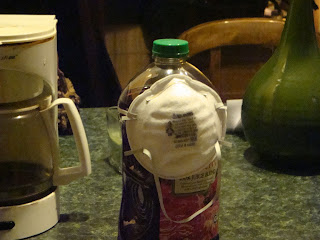Whoa-Oh, Peanut Butter
As a member of Fan Story, the writing web site, I'm privy to all manner of delightful prose and poems. Because I didn't have anything that was anywhere nearly as informative as this waiting in the wings, I asked my friend Judi, who goes by the name Judiverse on Fan Story, if I could use her post for a blog. She generously said I could, so here is a rather interesting story of the origin of peanut butter, something that almost every home in America most likely has. I hope you enjoy this as much I do.
Woah-oh, Peanut Butter!
by judiverse

Please Note: This is a follow-up to my article "Peanut Pioneer" about George Washington Carver and his contributions to peanut farming.
My dad loved peanut butter. He carried peanut butter and Ritz cracker sandwiches to work in his lunch pail every day and sang this little ditty about his favorite snack:
A peanut sat on a railroad track,
His heart was all a-flutter.
Around the bend came a choo-choo train,
Woah oh, peanut butter.
That explanation for the invention of peanut butter wouldn't stick to the roof of anyone's mouth. As I learned in my research on George Washington Carver, he discovered many different uses for peanuts, but didn't invent peanut butter.
In fact, there doesn't appear to be agreement about who deserves credit for inventing peanut butter. The peanut plant originated in Peru hundreds of years ago, and Incas used it as a sacrificial offering and buried it with their dead. The women ground peanuts to make a form of peanut butter.
When the Spanish conquered Peru, they took peanuts back to Spain with them. It then went to Asia and Africa, and the Africans brought the legume to the colonies in the 1700s.
There are several stories about who actually invented peanut butter. Rose Davis of New York is credited with grinding peanuts into pulp and spreading it on bread in the 1840. Others credit a Canadian, Marcellus Edson, who was granted a patent for his "peanut-candy" in 1884. However, he never put his invention to use.
Dr. John Harvey Kellogg also has reason to claim the honor. He received a patent for his technique of making peanut butter in 1894. His paste was easily digestible for patients with poor teeth. Kellogg was a Seventh-Day Adventist who believed in a plant-based diet, and he promoted peanut butter as a healthy alternative to meat. He made believers of Sojourner Truth, Henry Ford, and Amelia Earhart when they ate it at his spa in Battle Creek. Good Housekeeping advised women to make their own peanut butter using a meat grinder and to spread it on bread.
Peanut butter's popularity grew after it was introduced at the St. Louis World's Fair in 1904.
During World Wars I and II, peanut butter became an important part of the Armed Forces' rations. When the United States advocated "Meatless Mondays" during wartime, housewives wondered if they'd be serving peanut bread spread with peanut butter and pouring peanut oil on their salads.
A big problem with peanut butter still remained. The oil separated from the peanut mix. It had to be stirred, and the product spoiled quickly. Joseph Rosefield discovered a solution and received a patent for his process of hydrogenation in 1921. His process caused the oil in peanut butter to remain solid or semisolid at room temperature. This eliminated the need for stirring the peanut butter and kept the peanut butter from spoiling.
Today, peanut butter accounts for half of the sale of peanuts. That adds up to $850 million in sales annually. The tasty food is found in nearly 90% of American homes.
Thanks to hydrogenation, Skippy (a company founded by Rosefield), Jif and Peter Pan lead in peanut butter sales. Now all consumers have to do is choose between creamy or crunchy.



Comments
Post a Comment